Joe Gondolfi, a high school teacher for Chicago Public Schools, said he’s long been puzzled by the students and parents who seem obsessed with selective enrollment high schools.
These public schools offer accelerated programs and accept students based on grades and scores on an admissions exam.
Over the years, the admission process has become so competitive that the Chicago Board of Education compared it to the “Hunger Games.” As a result, board members now want to de-emphasize the program and instead invest in excellence across all school types, including neighborhood schools.
With all the hubbub over the future of selective enrollment — for which no plan is yet in place — Gondolfi asked Curious City how selective enrollment schools started in Chicago.
Before selective enrollment became the highly competitive program it is today, its main goal was to create islands of integrated schools in an otherwise segregated school system. (Although at least one school became selective for a completely different reason.) Education and civil rights leaders looked to specialty schools as a way to get families to voluntarily integrate the public school system. But when CPS faced shrinking enrollment during the 1990s, a new era of selective enrollment was ushered in. This timeline explores major milestones in the history of selective enrollment in Chicago.
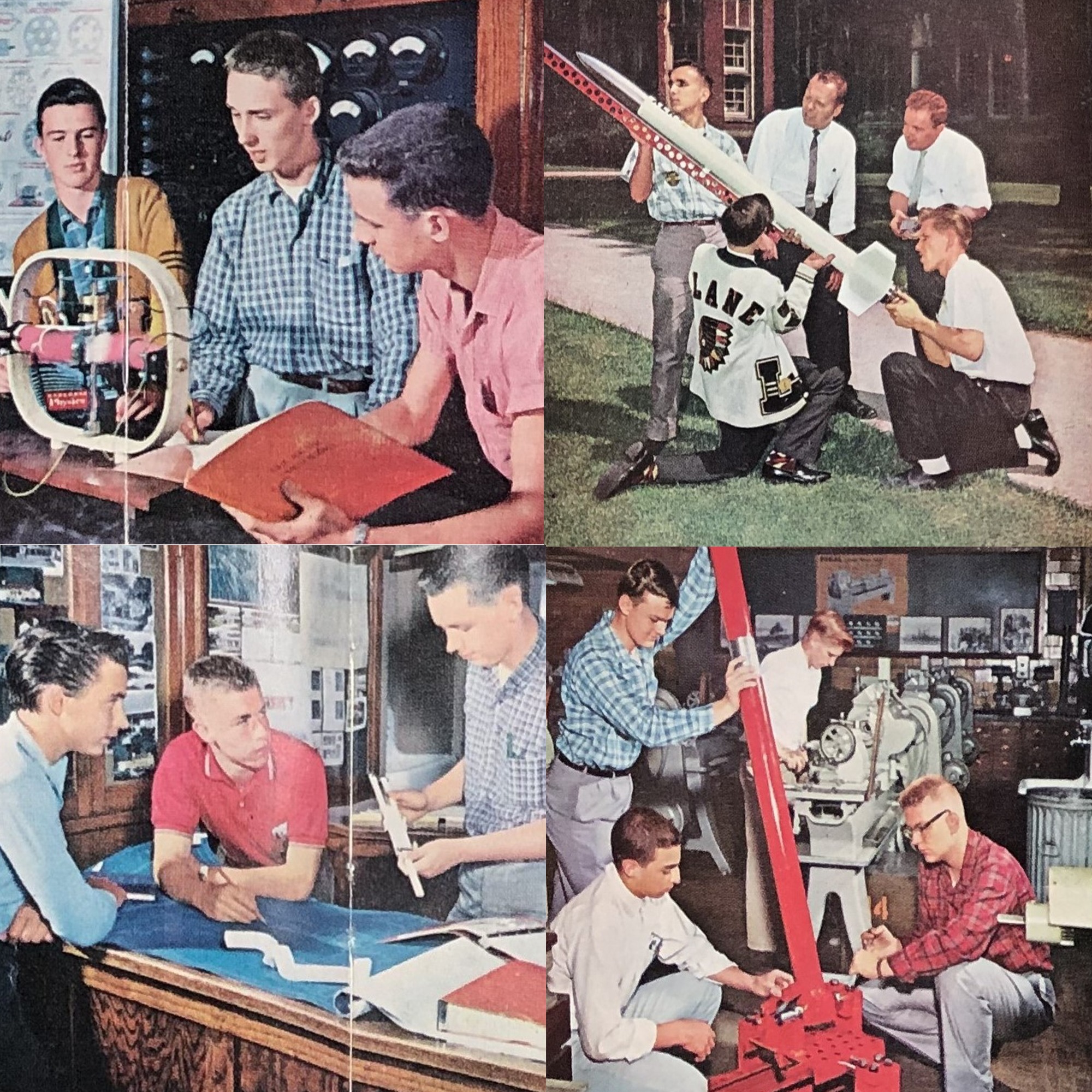
1958: Lane Tech becomes Chicago’s first public school for high achievers
In response to the space race — an intense competition between the United States and then-Soviet Union over space exploration — Lane Tech College Prep, then an all-boys manual training school, became the first selective CPS high school. At the time, there was concern that the U.S. was not producing enough scientists and engineers, and city and school leaders hoped that getting rid of remedial courses and putting in place stringent admissions criteria would foster budding scientists at Lane. The new school policy was to “only [admit] the students that would make the greatest contributions to American science.”
1963: Civil rights leaders protest school segregation in Chicago
On October 22, leaders of Chicago’s civil right coalition led a massive school walkout, protesting de facto segregation in Chicago Public Schools. Some 225,000 children and adults participated. At the time, Black students in overcrowded schools were being taught in portable classrooms that critics called “Willis Wagons,” a pejorative term aimed at then-CPS superintendent Benjamin Willis. The walkout happened after two court cases failed to hold the school district accountable for school segregation and poor conditions at majority-Black schools. The successful walkout led Martin Luther King, Jr. to believe that Chicago was fertile ground for a campaign against de facto school segregation.
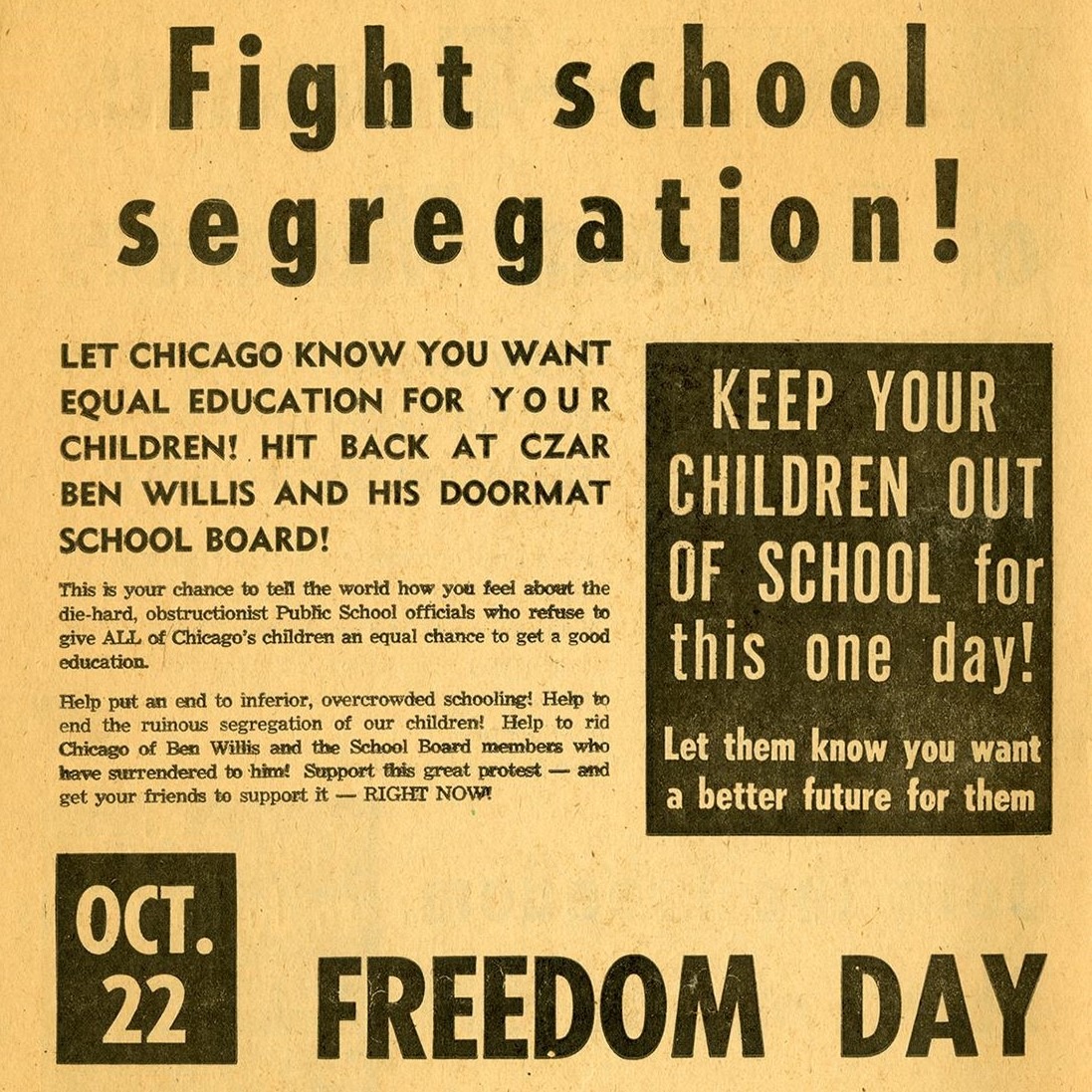

1968: The first magnet elementary school opens to combat segregation
James Redmond became CPS superintendent in 1966. He implemented a plan that would get families to voluntarily desegregate by opening magnet schools. Robert A. Black Magnet Elementary in South Shore opened with nearly equal numbers of white and Black students. Robert Black was the culmination of efforts by an interracial coalition to create a stably integrated school that would quell fears of racial turnover. The superintendent assumed that the only way to spur school integration in a segregated city was to entice white families to send their children to schools with Black students. Soon afterward, Disney Magnet Elementary opened on the North Side as part of the same voluntary integration plan.
1971: Lane Tech becomes coed
Lane Tech, which had previously been an all-boys high school, began admitting girls in 1971. The change had less to do with the women’s rights movement than with anti-Black racism, according to Michelle Weiner, president of the Lane Tech Alumni Association who researched the co-education transition. In the 1970s, the Austin neighborhood on the city’s West Side went from a majority-white to majority-Black community. Weiner said white parents in Austin lobbied city and school district officials to make Lane an option for their daughters, so they would not have to attend neighborhood schools. It was not until years later that Lane’s admission’s policy had racial quotas.

1975: Whitney Young becomes the model of a selective enrollment high school
While elementary magnet schools were lottery based, the education planning team decided that Whitney Young Magnet High School should be a school for “exceptional young people.” The school put in place admissions criteria including higher than average test scores on reading and math achievement exams. Because the school was started with the goal of voluntary integration, it had racial quotas like the city’s magnet elementary schools, according to Nick Kryczka, a scholar-in-residence at the Newberry Library who is writing a book on magnet schools. Kryczka said the campus was designed to rival suburban mega-high schools, with buildings devoted to different disciplines and ample sports facilities. Initially, in response to pressure from local activists, the school guaranteed that a certain portion of each admitted class would be made up of students who lived in West Side neighborhoods near the school. Eventually, that policy ended, and students citywide had to compete to get into Whitney Young.
1980: A federal consent decree mandates integration
Under the powerful Mayor Richard J. Daley, Chicago resisted a court order to integrate its public schools for decades. But after Mayor Jane Byrne came into office, the justice department was able to reach an agreement with the Chicago Board of Education. The district agreed to “establish the greatest practicable number of stably desegregated schools within the CPS and to provide compensatory programs in any schools that could not be stably desegregated.” As part of the consent decree, CPS established racial quotas for magnet and selective enrollment school admissions. Later, the district agreed to provide busing for elementary students to make it easier to attend schools outside their neighborhoods.
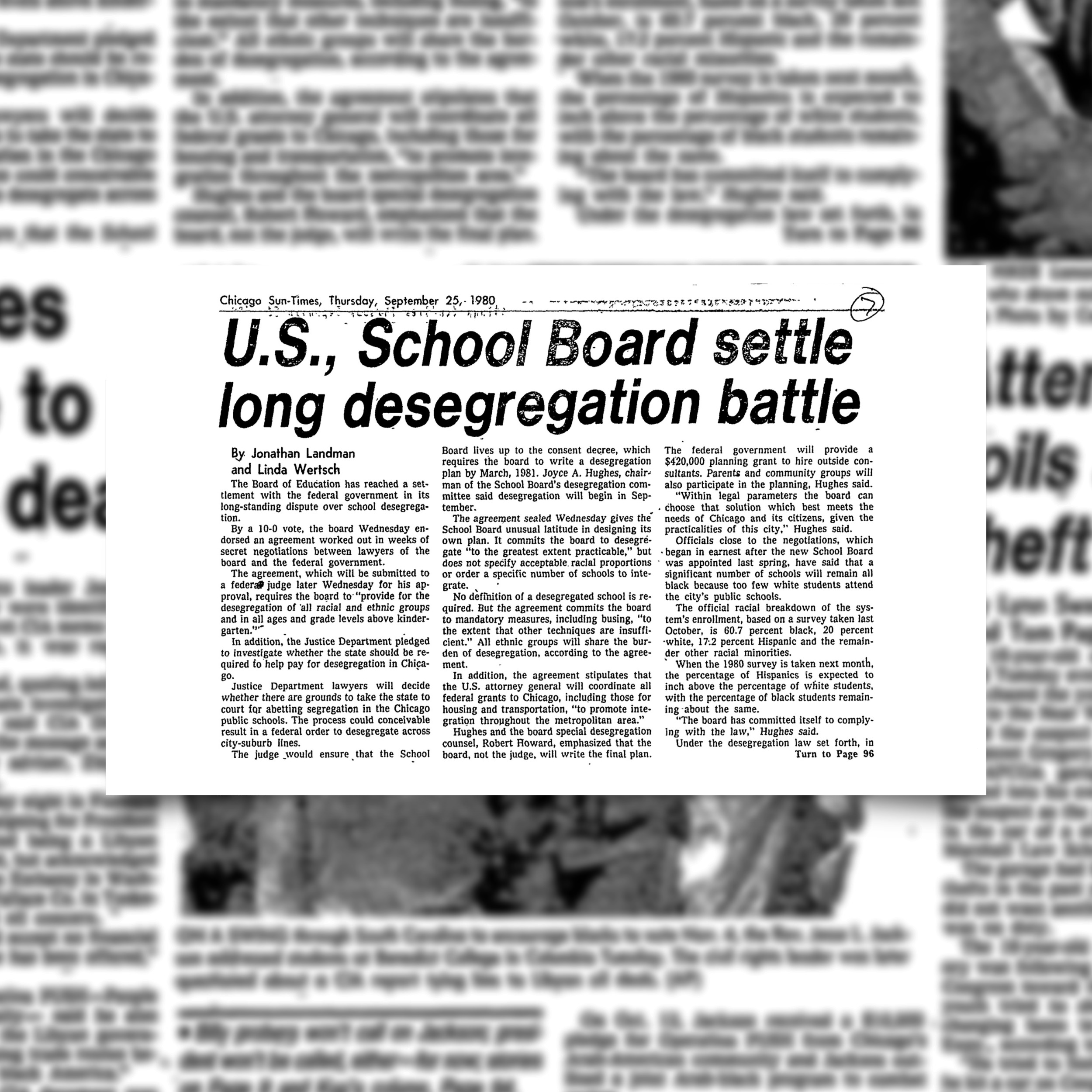
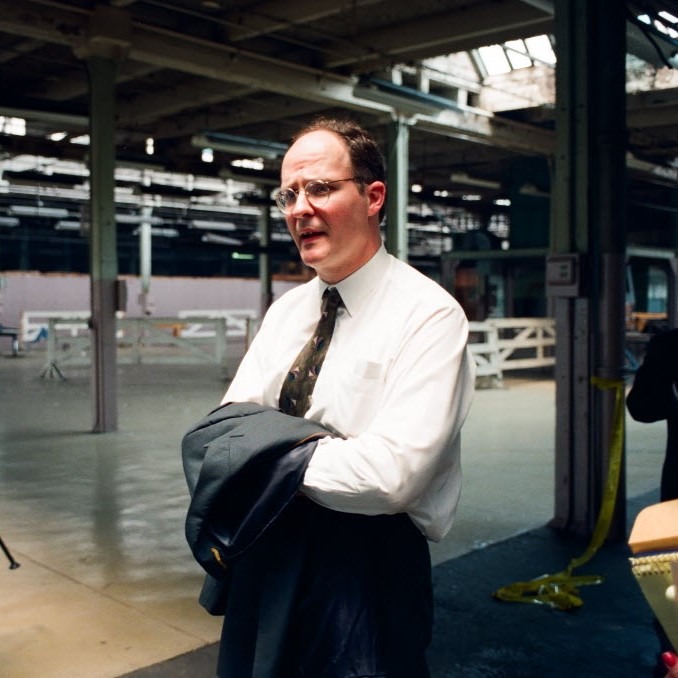
1995-2001: Selective enrollment expands under Paul Vallas
Given full control of the school district by the state in 1995, Chicago Mayor Richard M. Daley appointed Paul Vallas as the first CEO of Chicago Public Schools. In the prior two decades, the school district had been rocked by near-constant budget crises and labor strife. Vallas said schools were bleeding high-performing students, whose families were moving to the suburbs or sending them to private schools. During his tenure, Vallas put a selective enrollment school in each area of the city with the goal of stemming the tide. He took four existing high schools — King College Prep, Lindblom Math and Science Academy, Jones College Prep and Brooks College Prep — and converted them into selective enrollment schools. He also built two new selective enrollment schools: Northside College Prep and Walter Payton College Prep. Today, admission to selective enrollment schools has become highly competitive. About 16% of CPS high school students attend selective enrollment high schools.
2009: The consent decree is lifted, but CPS preserves selective enrollment
CPS had tried for years to get out of the consent decree. Former CPS CEO Arne Duncan said it imposed too many mandates, including the costly busing program. Finally, in 2009, under CEO Ron Huberman, a judge agreed with the school district that the 1980 court order was “outdated.” The judge acknowledged the difficulties in desegregating a school system where the white population was only 8% — less than half of what it was when the order went into effect. Huberman said he was committed to maintaining diversity in the district’s selective enrollment and magnet schools. He unveiled intricate admission guidelines that used census data to divide the city into socioeconomic groups; these socioeconomic tiers were a proxy for race. After that, students competed against others from the same tier for a seat in selective enrollment schools.

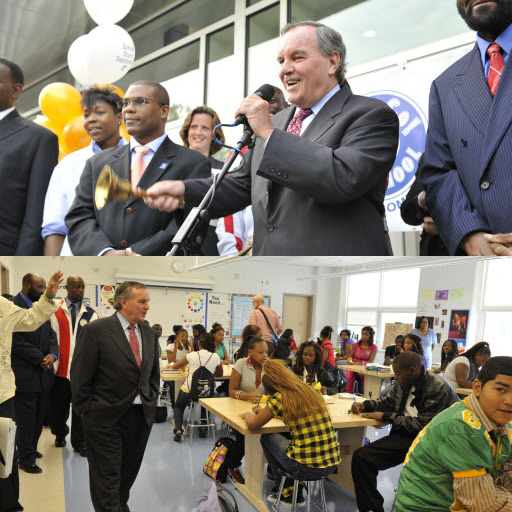
2009-2011: Additional selective enrollment schools open by community request
Two dilapidated high schools were replaced with brand new buildings and selective enrollment programs, following push from community activists. In the case of Westinghouse College Prep in West Garfield Park, community members pointed out that there were no other selective enrollment schools on the entire West Side. Similarly, activists in South Shore pushed for the new South Shore International College Prep to have admissions criteria. They argued that most area students were leaving the neighborhood for high school, and they wanted high-performing students to have the option of staying in the neighborhood.
2015: Mayor Emanuel opens the last selective enrollment high school
In the fall of 2015, then-Mayor Rahm Emanuel turned Hancock College Prep, formerly Hancock High School, into the city’s last selective enrollment high school. But when Emanuel announced he was converting the neighborhood school into a selective school, many in the community felt blindsided. Hancock had just undergone an expensive, state-mandated intervention and was considered a good neighborhood school. Critics viewed Emanual’s plan for Hancock as a way to score political points in his reelection bid. Today, Hancock is the only predominantly Latino selective enrollment high school.
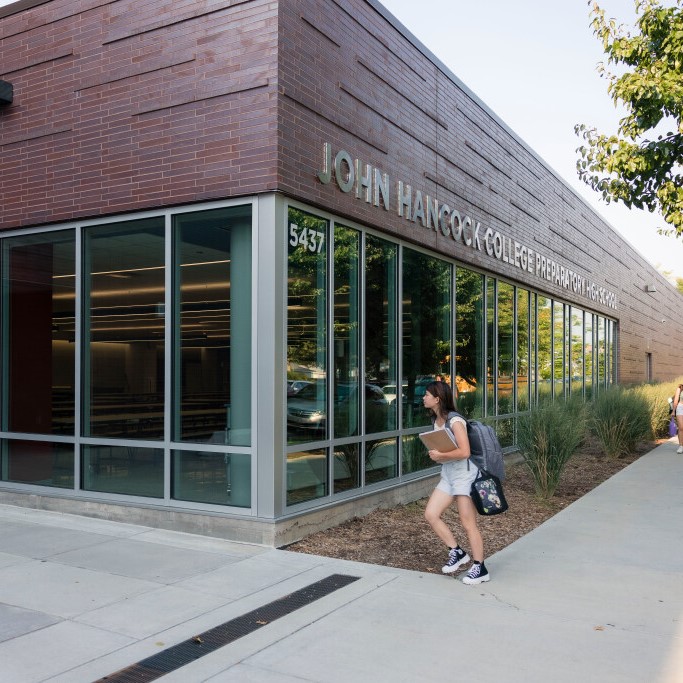

2023: Chicago Board of Education says it wants to deprioritize selective enrollment
Mayor Brandon Johnson, a former organizer for the Chicago Teachers Union, came from a movement that sees school choice as diluting the district’s limited resources and creating winners and losers. After he was elected, Johnson appointed new members to the Chicago Board of Education. In their first major act, in December of 2023, the board approved a resolution that called for prioritizing fully funded neighborhood schools and transitioning “away from privatization and admissions/enrollment policies and approaches that further the stratification and inequity in CPS and drive student enrollment away from neighborhood schools.” There was an immediate uproar from people who worried that the board would close selective enrollment and specialty schools. The mayor and board members were forced to publicly clarify that they did not intend to close these schools. A plan for the transition has not been created yet.
Sarah Karp is a WBEZ reporter. Follow her @sskedreporter.


